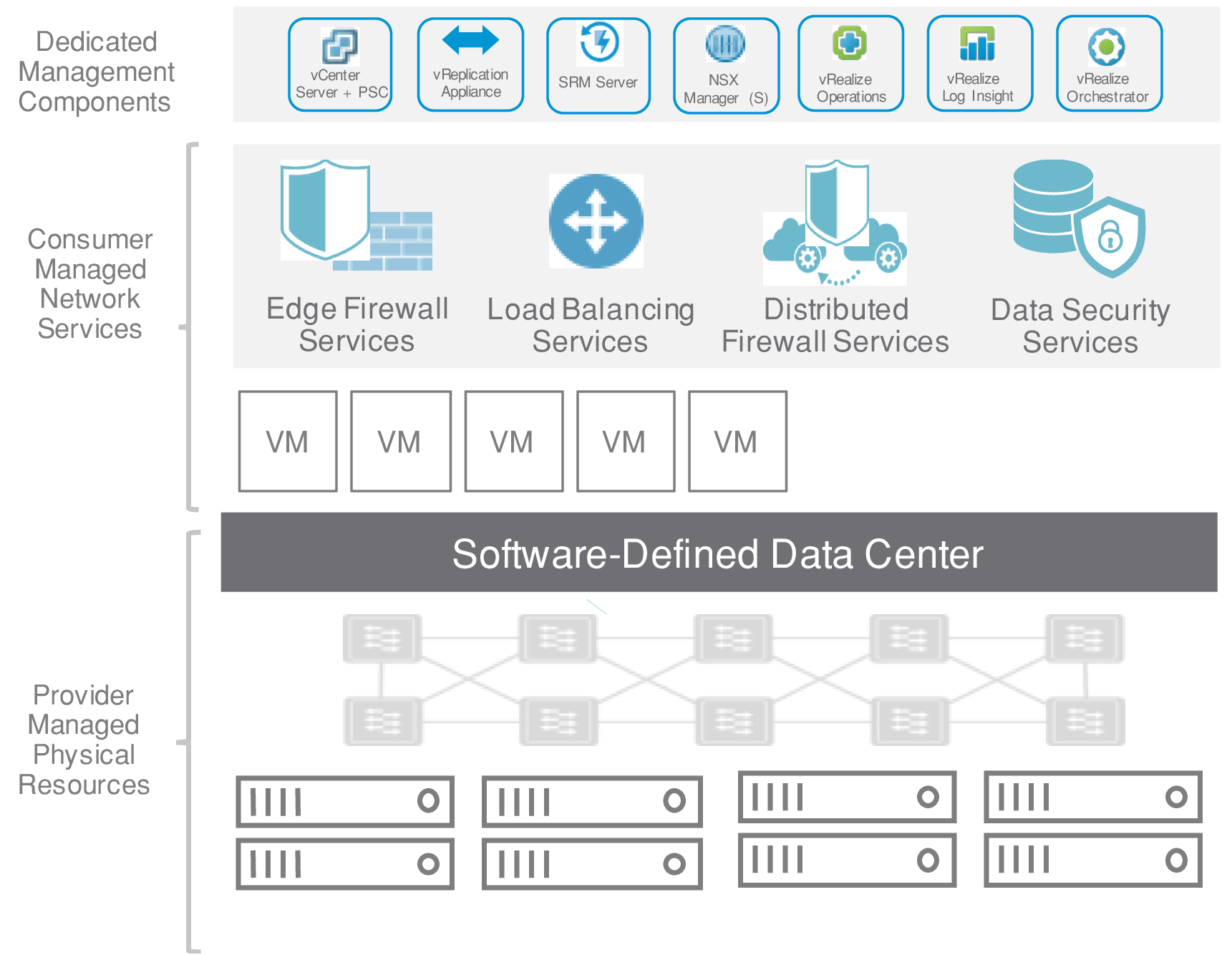Dedicated vCenter Server Service Design
The dedicated vCenter Server model is one of the most common services offered by VMware Cloud Providers today.
Figure 2. Dedicated vCenter Server
A typical service description for a dedicated vCenter Server offering includes the managed support for a single-tenant dedicated vCenter Server system. This solution gives consumers more control over their environments by providing direct access to the entire inventory of their vCenter Server system to create, modify, and decommission VMs in minutes using the same tools they use on-premises, the vCenter Server user interface and APIs. This means that the service provider’s hosted VMware environment will look and feel like an extension of the customer's data center, and therefore will often include additional VMware products, such as a dedicated VMware NSX® environment, VMware vRealize® Operations Manager™, and VMware vRealize Log Insight™ solutions.
Key advantages to service consumers are described in the following figure.
Figure 3. Key Advantages of a Dedicated vCenter Server System
These service offerings also build on the hybrid cloud model, where customers might extend their current service catalog, through vCenter Server, to manage both vSphere environments by way of a single pane of glass, using vCenter Server Enhanced Linked Mode. Whether this is a standard or advanced service offering depends on the service provider’s portfolio.
Service consumers who leverage a vCenter Server-to-vCenter Server hybrid cloud benefit from a truly dynamic infrastructure that can respond to spikes in demand in an instant, or take advantage of features such as cross-site live migration. This model gives consumers near unlimited resource, providing a new level of flexibility when it comes to short-term projects or migrations.
Figure 4. Dedicated vCenter Server Hybrid Cloud Architecture
As illustrated in the previous figure, this service model employs vCenter Enhanced Linked Mode to connect two or more vCenter Server objects together, providing the ability to view and search across all linked vCenter Server systems, and to replicate roles, permissions, licenses, and other key data across systems. Enhanced Linked Mode also provides the following features to improve the quality of the end consumer operational experience:
• You can log in to all linked vCenter Server systems simultaneously with a single user name and password.
• You can view and search the inventories of all linked vCenter Server systems within the VMware vSphere Web Client.
• Roles, permission, licenses, tags, and policies are replicated across linked vCenter Server systems.
This solution simplifies a service provider’s ability to provide flexible resource consumption from an end consumer to a VMware Cloud Provider, with a particular focus on the use cases illustrated in the following figure.
Figure 5. vCenter Server Hybrid Cloud Use Cases
While the vCenter Server is dedicated, most service providers will employ a level of role-based access control (RBAC) to limit what actions their customers can perform. This provides the benefit to the service provider of always having access to perform troubleshooting activities, and maintenance and patch management. The level of restriction varies by service provider with the demarcation line between provider and consumer clearly defined in the service description and service level agreement.




